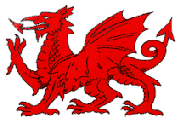
An introduction to the line

The 28 miles of single track railway linking the mainline at Llandudno Junction with Blaenau Ffestiniog offers some of the most picturesque and spectacular scenery anywhere in Britain. The line also forms part of the Cambrian Rail Cruise - the circular route around North Wales by train
The railway climbs from sea level at Llandudno Junction to a summit of 790 feet in the Blaenau tunnel and the variety of scenery on offer is breathtaking - estuary, woodland, moorland, mountain, industrial - is all to be seen through the train's windows.

All the seasons of the year can be appreciated - sometimes on the same day! Intermediate stations offer attractions of their own and, for the active, there is a free leaflet available with guides to walks along the route. The first section of the line to be built was from Llandudno Junction to Llanrwst, this was opened in 1863. A subsequent extension saw passenger services extended to Betws y Coed in 1868.

By this time the LNWR had its sights on the slate boom then occurring at Blaenau Ffestiniog and arranged a survey of a possible route. Because of the rugged terrain the initial proposal was to build a two foot gauge line and connect with the Ffestiniog at Blaenau, however shortly after construction started the decision was made to build the line to standard gauge. Despite the expense and delays of the long tunnel under Moel Dyrnogydd a temporary station at the tunnel mouth was open in Blaenau by 1879. By 1881 what was to become Blaenau Ffestiniog North station had opened.

The line then settled down to the traditional railway role of supplying passenger and local goods services. It also carried a substantial amount of slate traffic. Some of this was carried in six wheel transporter wagons which conveyed the narrow gauge trucks to a purpose built dock at Deganwy. These wagons were built at the LNWR's Earlestown Works as were a batch of 2' gauge slate wagons. The tourist potential of the line was soon recognised and observation carriages were introduced in 1911. Dieselisation of passenger services came as early as 1956 when the original "Derby Lightweight" sets were introduced, although steam hauled goods trains continued until 1966. As the slate industry declined so did goods traffic and general goods services finished in 1984.

Nuclear traffic to Trawsfynydd first ran in 1964 following opening of the new connection to the ex GWR line. This together with explosives traffic from Maentwrog Road comprised the freight traffic on offer. Needless to say the two types of traffic were kept strictly separate! The explosives trains finished in 1988 while nuclear waste continued into 1997. There was however a 3 year break in nuclear waste services from 1991 to 94 while the power station was prepared for decommissioning. Nowadays their is no freight traffic on the line although hopes remain high that slate waste and timber may be carried in the future.

Reopening of the Ffestiniog Railway throughout and the new Blaenau Central station in 1982 gave a boost to passenger figures and has seen more special trains run. It has now become possible to do a complete circular tour of North Wales by rail using the North Wales Coast line, Conwy Valley, Ffestiniog and Cambrian lines - see my Cambrian Rail Cruise site for full details of times and fares. Connections with the Snowdon Sherpa bus network are available at Betws y Coed while at Blaenau the buses are right by the railway station.

Newer forms of passenger trains - Sprinter and Pacers - appeared from 1986. Pacers were however very soon banned from the line following complaints of squealing wheel flanges and they remain prohibited. The older DMU's reappeared in 1994 when two sets were dedicated to the line. Despite their age these trains were popular with passengers because of the forward view they offered. Nowadays all services are formed of more modern units, the 2 car class 150 units work all trains. Class 158 and 175 trains are not permitted on the line.

The present timetable for the line sees 5 return rail services a day. Sunday rail services - 3 return journeys - run throughout the Summer timetable period with buses providing a winter replacement. The timetable is currently based around one unit captive to the branch which does lead to less than ideal timetabling at times.

The future
The line would appear to have a secure future as a passenger carrying line as the emphasis on green tourism grows but it would be desirable for some investment to take place particularly in the signalling system. At present both Tal y Cafn (for the road crossing) and Llanrwst need to be manned for a service to run. The introduction of radio signalling would both cut costs and enable a more frequent service to run as far as Betws y Coed - the most popular destination. Until then the ritual of exchanging tokens at Llanrwst will continue. Another item worthy of attention is carriage of cycles, the present timetable has a warning note concerning limited space for bicycles, in a tourist area with many dedicated cycling trails this is a disappointment. Hopefully the introduction of regular freight services for slate waste will result in substantial investment in both track and signalling systems, although this is looking increasingly unlikely..

Next page: The view from the train